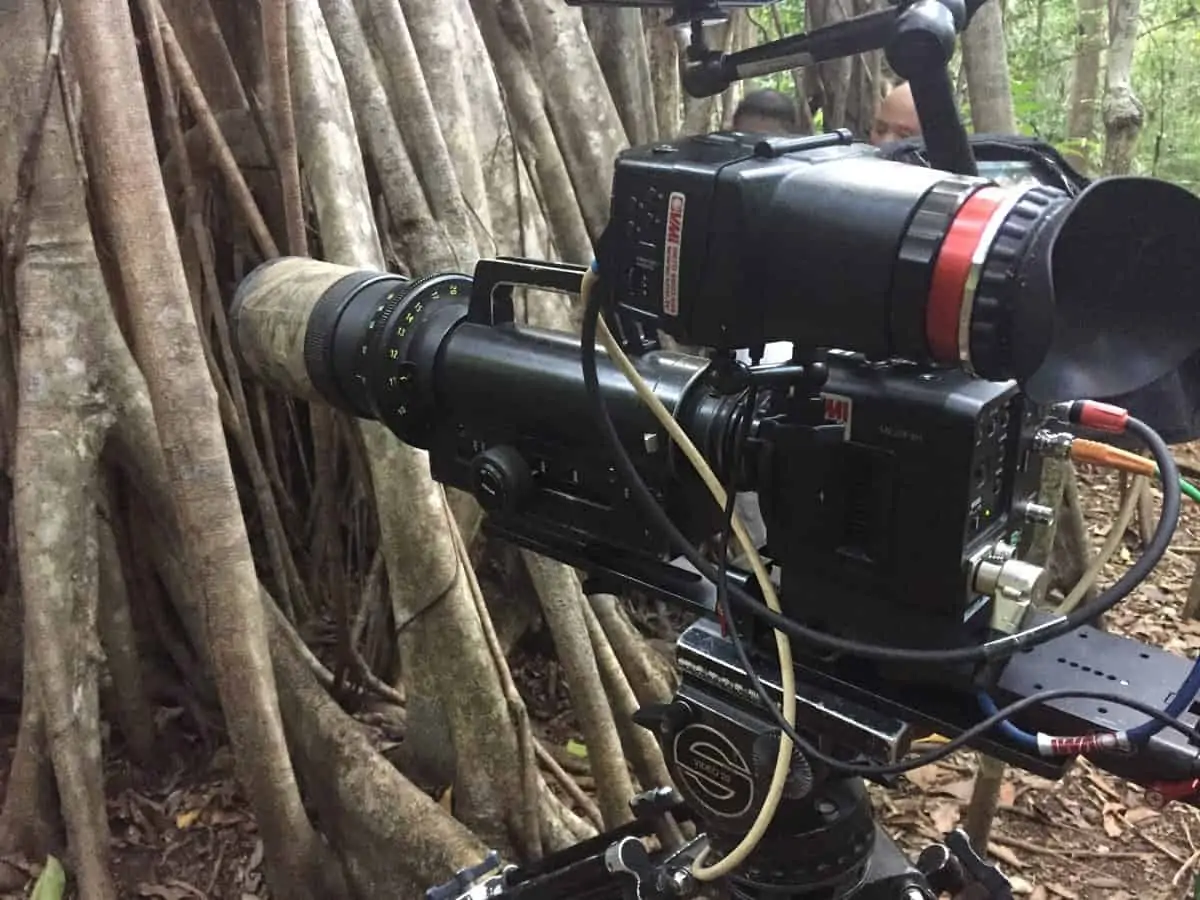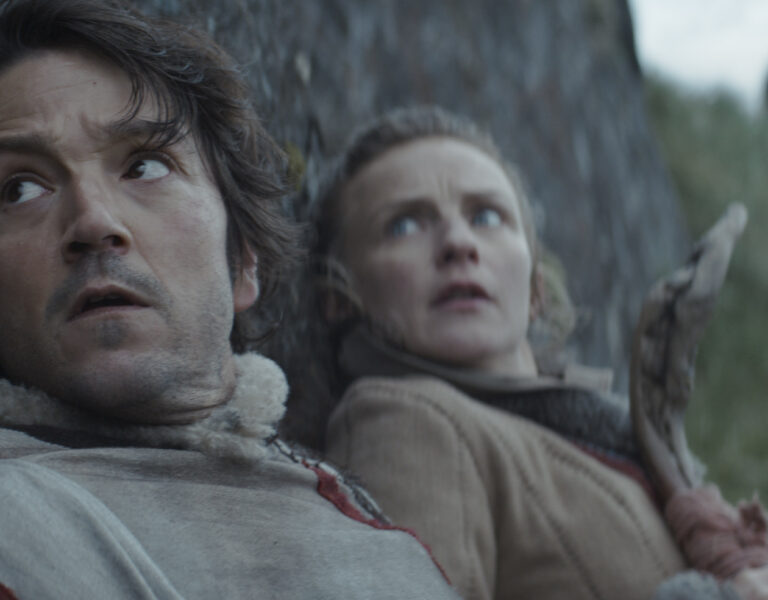ECHOES OF EKTACHROME
Arctic Monkeys’ staying power at the forefront of British music culture has been primarily due to the band’s constantly evolving sound. Never afraid to experiment with new instruments or lyrical stylings, the quartet have pushed boundaries ever since they exploded onto the scene in the early noughties.
For their latest album, The Car, Arctic Monkeys have sought inspiration from decades gone by. Infusing sounds of the 60s and 70s into their iconic Sheffield-born sound. The natural accompaniment for the nostalgia-drenched LP is a series of music videos shot on film and inspired by TV and cinema of the past, including an elaborate zoetrope set up.
Cinematographer Frank Mobilio and director Brook Linder talked us through shooting the music video for the single “Body Paint” and the intricacies of shooting on film.
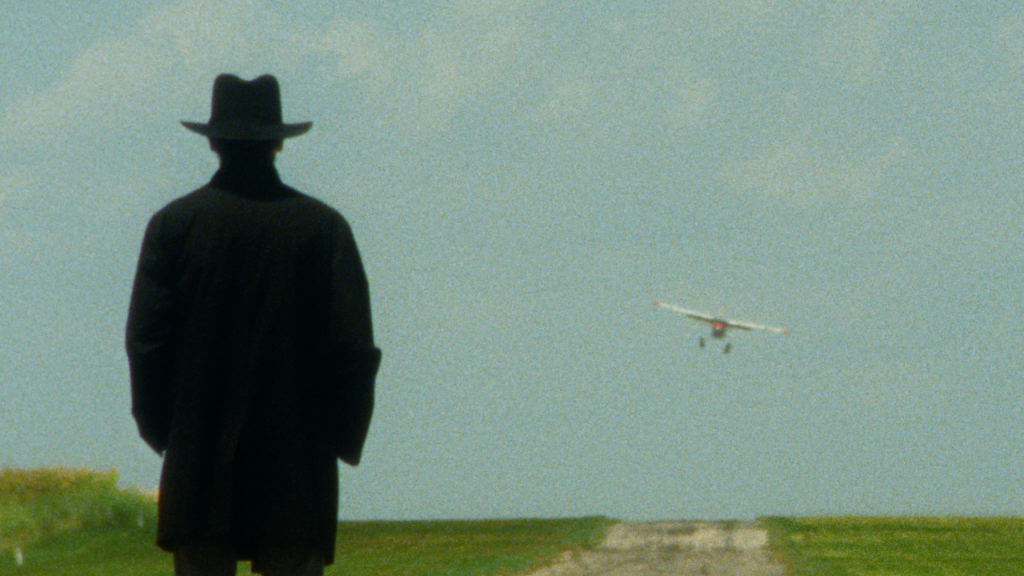
What interested you most about the project?
Frank Mobilio: Really everything was interesting on this one! The team – director Brook Linder and creative director Ben Chappell – we’re all very close friends and we’ve all been working together for years and years. Ben has been a frequent collaborator with Arctic Monkeys, but this was my first real foray into their universe. They wanted to do a video on Ektachrome in London so of course I went to London.
How did you collaborate with each other?
FM: Brook and Ben spent a lot of time working on the concept with the band and then the three of us spent a lot more time breaking the ideas down and figuring out how to execute them. they were going for something that could seem simple and effortless but packed with iconography like an advertisement. There was a lot of research into vintage lighting fixtures and editing rigs, and we looked at a lot of locations before ultimately deciding to shoot predominantly on stage. Brook and I also shot tests of the Ektachrome in my garage to see how the film handled exposure, colour, and normal vs cross processing. That was incredibly valuable to us.
It was a tough prep because as we got closer to the shoot, we were spread out all over the world and communicating on zoom at strange hours (not uncommon these days but always a challenge). I was on a job in Florida while Brook was in LA, Ben was with the band in Nottingham and the rest of the team including Producer Ali Khalil and production designer James Soldan were in London. We didn’t get to meet in the same place until the day before the shoot.
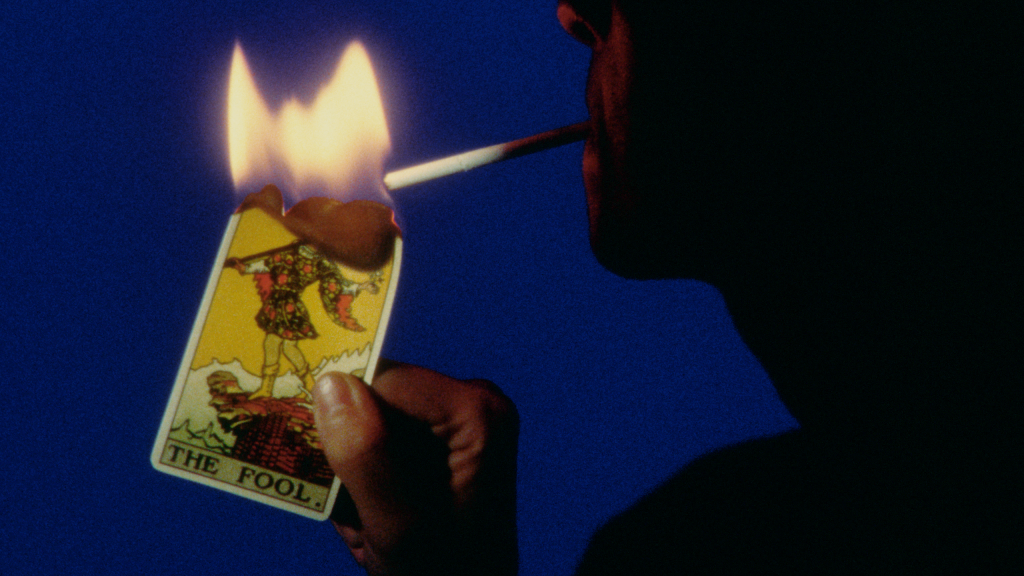
Brook Linder: I’ve been shooting with Frank for almost ten years now. We have an unspoken way of working – we’re quietly after the same things. Frank has good taste and I have bad taste, so we meet somewhere in the middle. A little bad taste is ok – maybe expected, even – from the director. Frank elevates the situation and usually keeps me from making big mistakes. He’s extremely thoughtful.
We knew we had to shoot the band on a certain date in London, and then we’d shoot the rest of the video in Missouri. Planning the logistics of the London shoot between Frank, Ali, James, Danny, Ben and myself was the most difficult part of this – us all being so far apart in different time zones. You lose so much time. It’s very frustrating. Someone isn’t sleeping, you know. Once we all landed in the same room things were fun and fine.
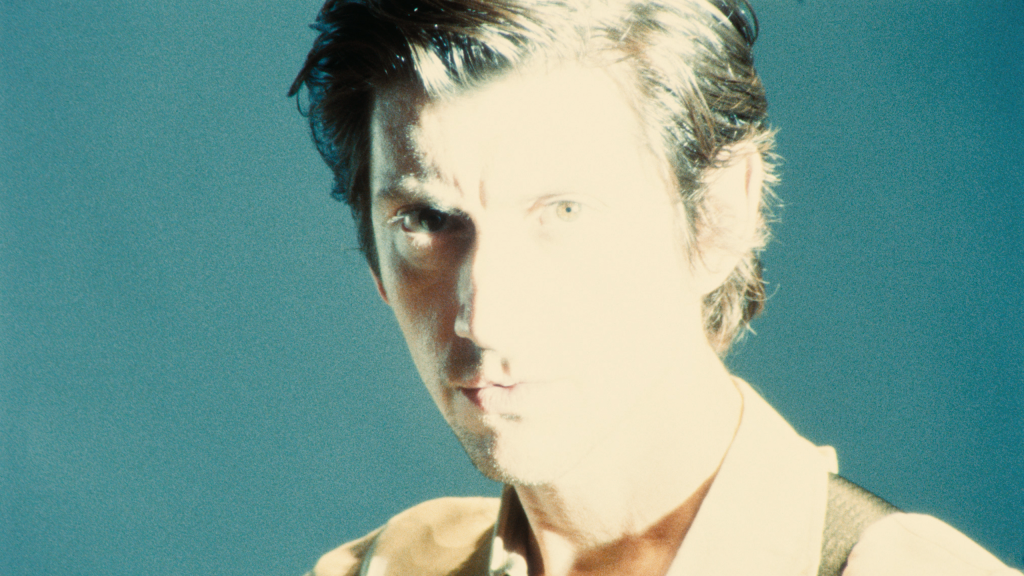
When we got to Springfield, Missouri it was back to being just a small shoot with Frank,Nikki Simmons and the talented crew of Locke and Stache. That’s where we shot the portion of the video that’s just these little images – little bits of iconography. We really built those shots with a scalpel and it was great fun.
For the record: Frank did not go in the helicopter. And he was not there to load the Scoopic for me. I had to watch a YouTube video.
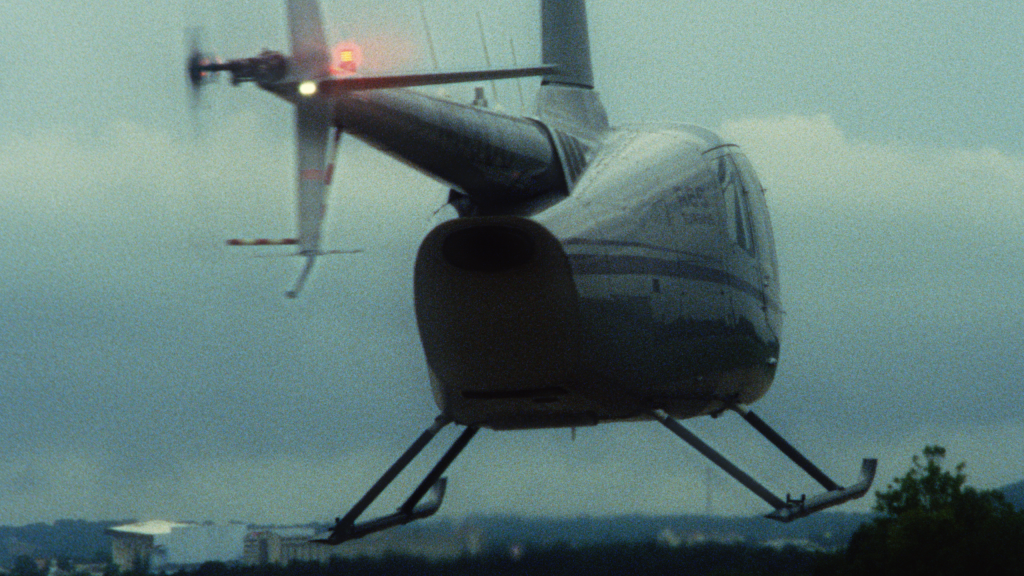
What was your personal relationship like to the music of Arctic Monkeys prior to shooting?
FM: I knew the tunes well but have been especially familiar with the music videos over the years as Ben and our friend director Aaron Brown have been collaborating on projects with the band for a long time. It was super exciting to be invited into that world, and it was a lot of pressure to try to contribute something to such a prolific catalogue of music and music videos. Those guys have done some of my favourite music videos ever.
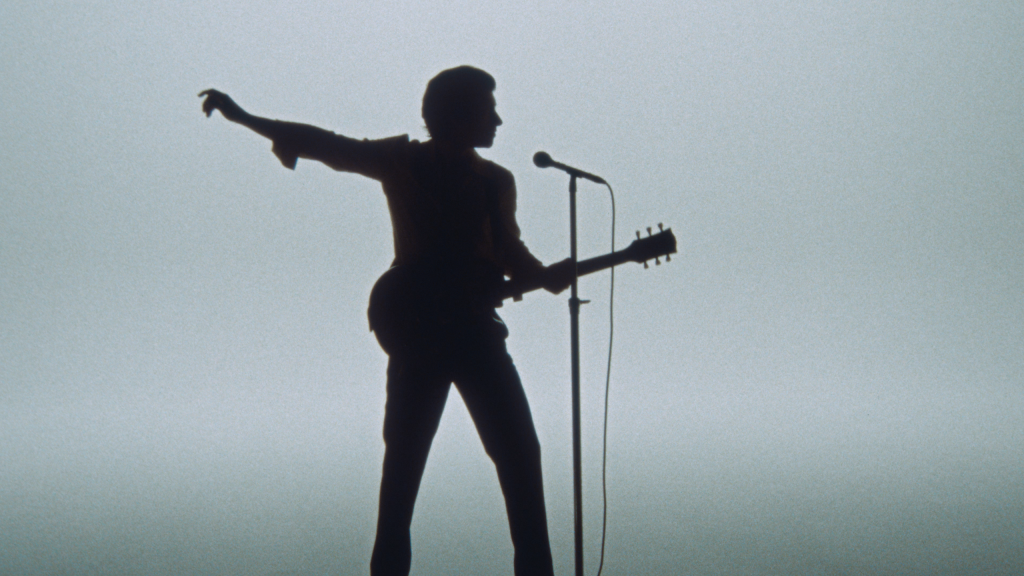
What were some of the cited inspirations behind the feel of the video?
FM: Ben and Alex Turner had some clips from 60s live TV performances they were bouncing around. The zoetrope literally came to Brook in a dream and found its way into the video. The recruitment test film from The Parallax View (as well as the film as a whole) is a very present inspiration for us too.
BL: It’s always The Parallax View with us.
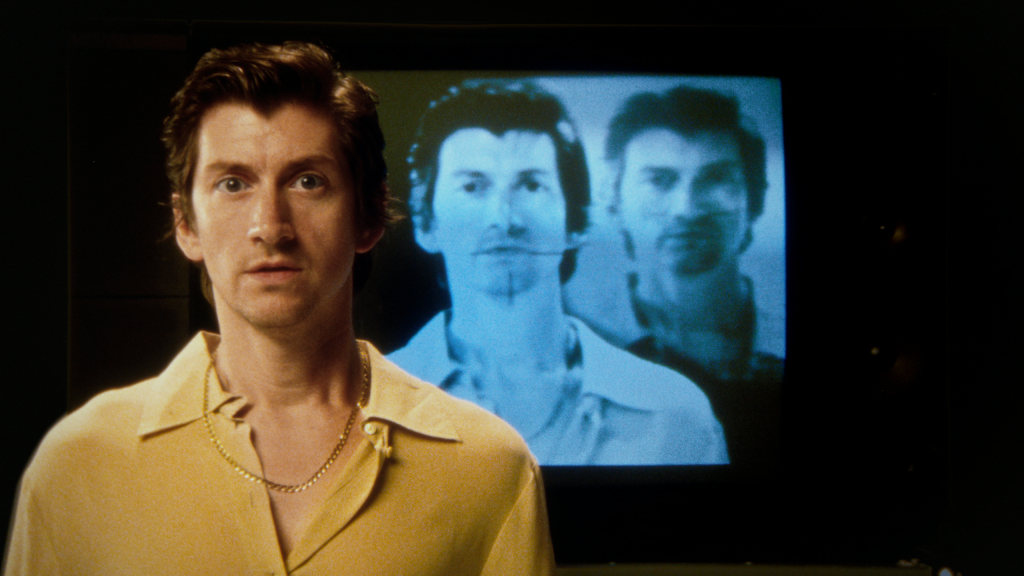
Is it fun for you shooting on film for projects that use the process of shooting and editing celluloid within the story?
FM: Yeah it’s always fun when you get to shoot on film, but it was especially thrilling to shoot 16mm reversal film being spliced and edited on 16mm reversal film. We were lucky to be working with an artist and creative and producing teams who all champion film as a recording medium.
How did you and the crew go about shooting on film in such low light conditions, such as the electronic tanning booth?
FM: The tanning booth was one of the only true low light setups, and for that we used 500T, but pretty much everything else in the video was shot on Ektachrome and really needed a lot of light!
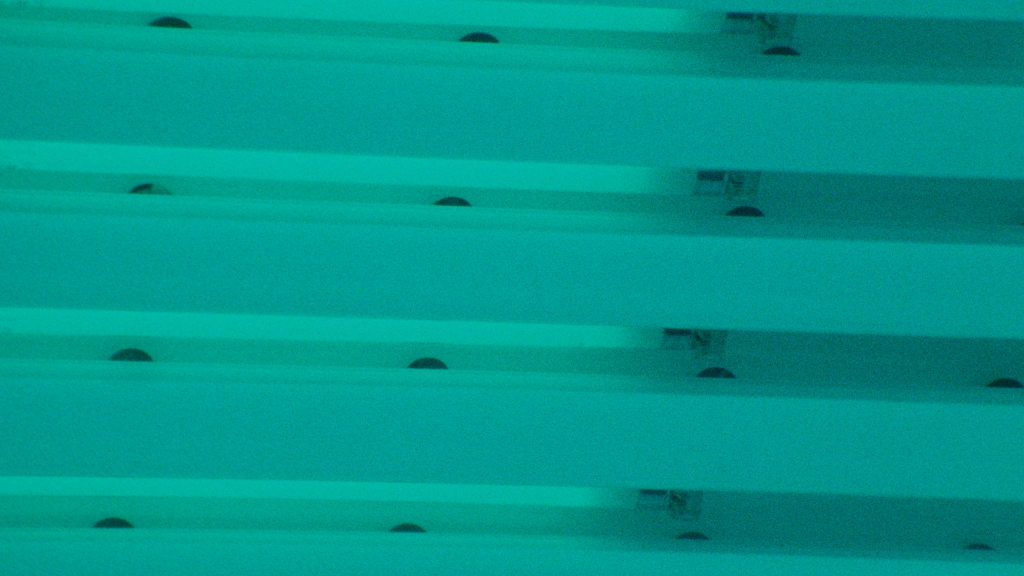
What gear and film package did you use for the shoot?
FM: the main camera package was an ARRI 416, canon 6.6-66mm & 10.6-180mm zooms and ARRI/Zeiss ultra primes. for the “shards” as we called them – the small vignettes that appear through the video – we were using a Canon Scoopic or a Bolex.
The film stock was predominately 16mm Kodak Ektachrome 7294 with just one or two shots on 500T 7219.
We were lucky to work with gaffer Danny Hayward of SHL London who went above and beyond to pull in all the lights this job required. Not only did we need a tremendous amount of light to facilitate shooting on 100 speed stock, at a T2.8, in 33 or 60 or sometimes even 150 fps, but because of the concept of the video, we needed specific fixtures that could appear on camera and fit into the world.
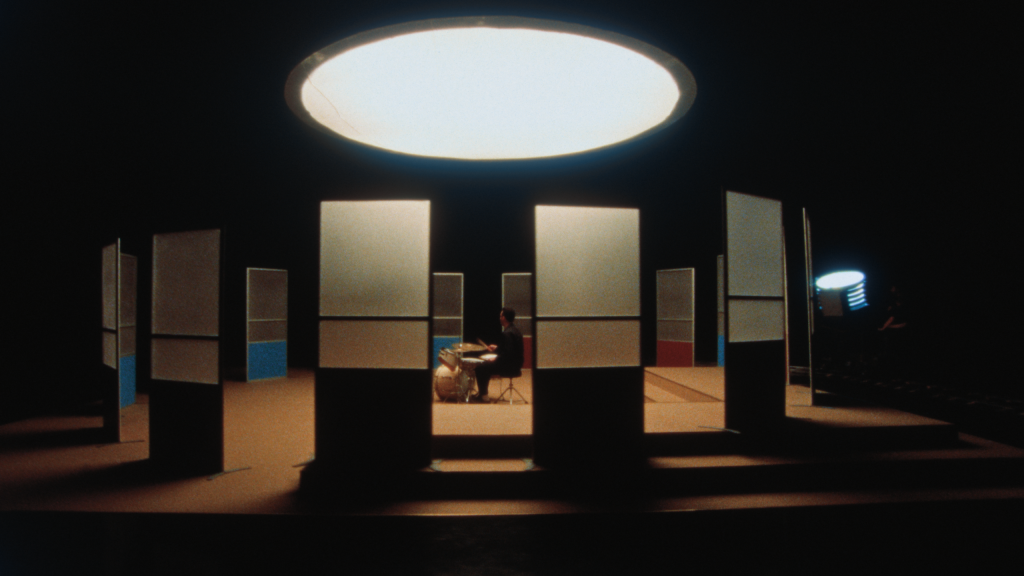
For example, we knew we wanted to use brute lights for the “guitar stabs” setup, but we wanted a different look than the typical red mole Richardson brutes. We were searching for brutes with a blue housing, but then Danny stumbled upon this lot of silver brutes and we had to pull the trigger on those, they looked too cool. Our circular soft box required 11x Nanlux Dino 1200c units. We had a 12k HMI mole beam on a dolly and track that was operated live like a searchlight.
From shooting at the Soundstage in Springfield, MO previously, we knew they had this massive back line of beautiful 2k fresnels with green housings. We just had to put those in the video and even designed some of the shards around those.
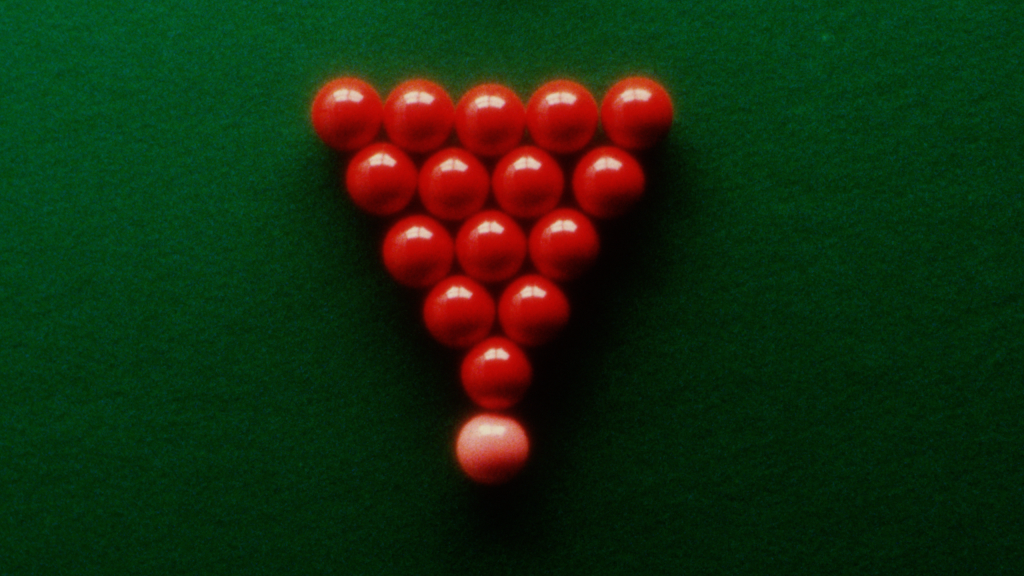
What was the instruction behind the rotational camera movements and rotational motifs?
FM: The circle motif wasn’t something I remember ever talking about explicitly, but i think it’s one of those things that just sort of happens subconsciously and evolves. as you’re planning the setups and coming up with different versions, you slowly start to realise what belongs and what doesn’t and we were just really gravitating to all these round, spinning setups.
Did you shoot the ariel footage yourself?
FM: Brook went up in the helicopter with the Canon Scoopic and a couple rolls of film and shot it all himself! The guys had spent the previous day or two out in the field preparing the crop circle.
BL: It’s true. Frank was really anti-helicopter. I don’t blame him – I was/am anti-helicopter, but we needed the shot!
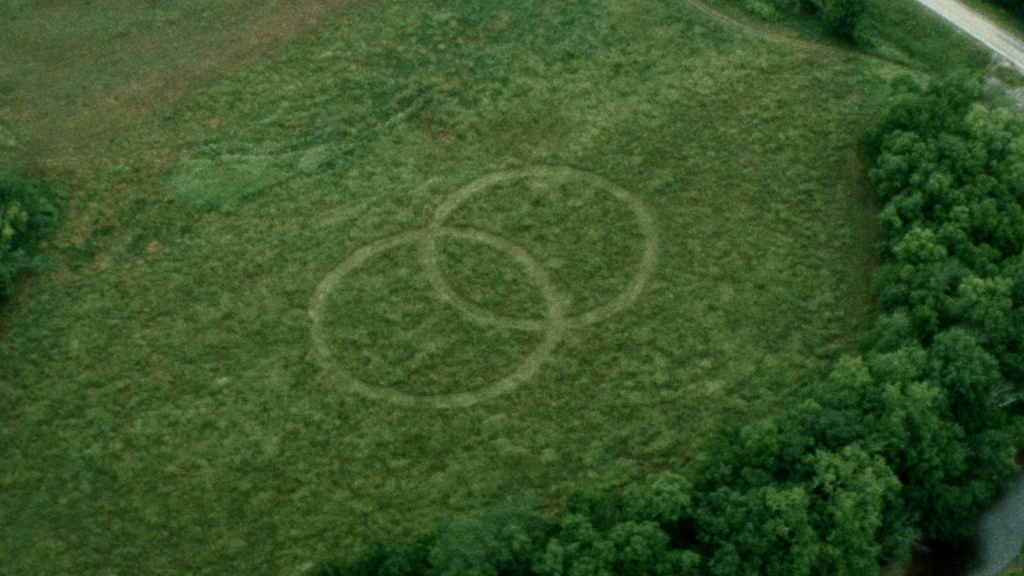
What was your favourite scene/sequence to shoot?
BL: Nikki Simmons – who handled all of the art department for the Missouri shoot – really put together some wonderful vignettes. Our two days filming those perfect little shots on the SGF Soundstage was an absolute blast. The standout was the acoustic guitar hole rig, which she whipped up in maybe fifteen minutes and it looked perfect.
What was the most challenging scene/sequence to shoot?
FM: Both my favourite and most challenging sequence to shoot was the spinning zoetrope performance setup. we spent a lot of time in prep agonising over the logistics of this set – how big should it be? How would we light it? How would we move the camera around it? Originally we’d planned to have the whole band in the set performing at once so we decided to build it quite large and James designed this gorgeous set with the perfect colours and textures. Since we wanted the camera to move 360 degrees around the set in a super wide shot, we knew that any lighting would have to be frame safe.
So, we settled on the large circular overhead softbox which was wrapped in duvetyn so only the round face was exposed. The 12k HMI mole beam on dolly track served as both a lighting tool and a bit of set dressing. We even had the band operate it for a shot. we set the LED lights in the box to 3200k so that the HMI beam could read more blue. The film stock testing gave us the confidence to shoot under tungsten/led light and correct it back. We thought we might fill the set with some of the silver brutes, but ultimately decided to keep it clean.
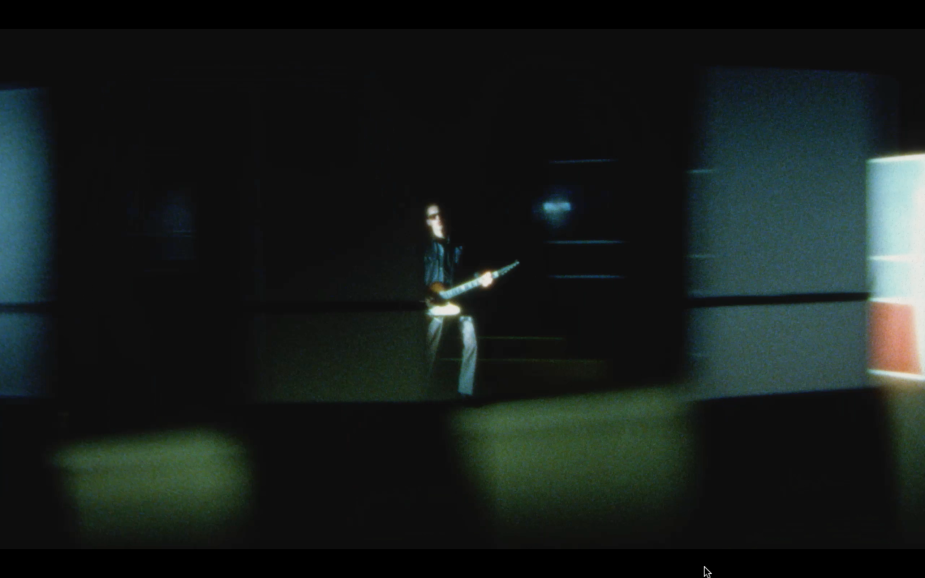
The set was too large to fit inside any pre-existing circular dolly track so we had to figure out a way to move the camera around it. Luckily after much brainstorming, Ali found Dan Lobo-Pires at DLP Films who provided an electric tricycle outfitted with a Ronin 2 and Flowcine Black Arm. We taped out a large circle on the floor around the set and this rig acted as our dolly allowing us to wrap around and around with great control and plenty of speed. We shot in both slow motion as well as fast motion which gave us the blurred effect in the final edit.
This whole setup was really one of those things where we had no idea if it was all going to work. But everyone brought a great idea or two to the table and all the pieces fell into place. I could have shot on that set for days.
BL: We had a pickup day that we lost Frank for. We were picking up the other half of a very, very important scene – not a situation where you want to switch DPs. However, Natasha Duursma came out, got it, threw herself into the project and absolutely nailed it. You wouldn’t know it. Seamless. It was a nightmare situation, and she really landed the plane.
